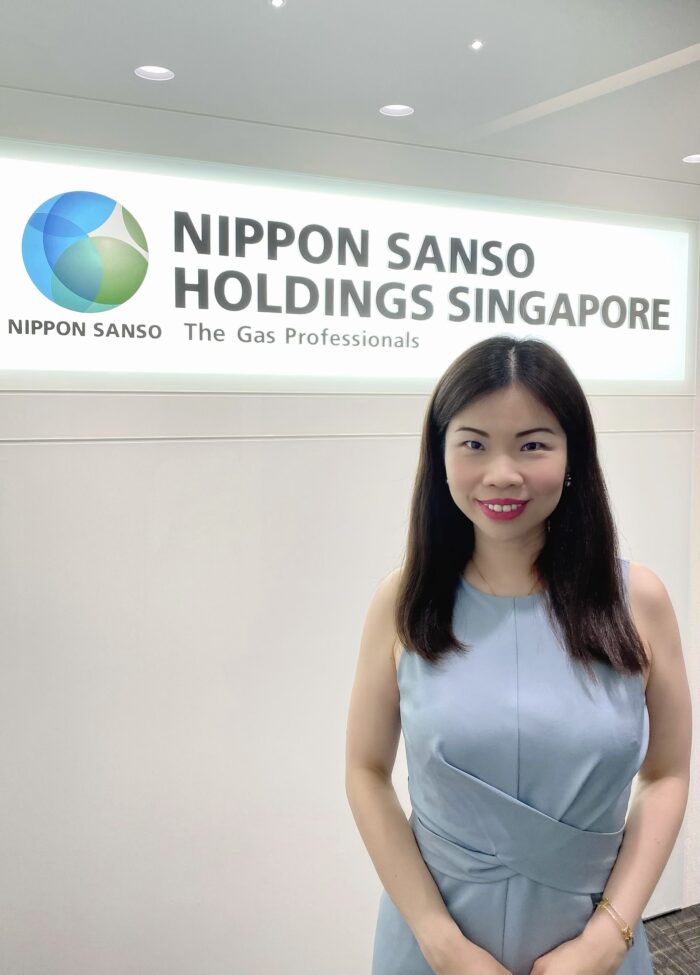Transforming work with organisational alignment
- Shawn Liew

With skilled employees forming the foundation of a skilled workforce, the challenge is for companies to find the right employees when faced with a shortage of skilled workers.
Describing this as a “growing concern” for companies in Singapore during the pandemic, Pauline Loo, Senior Vice-President, Human Resources, Nippon Sanso Holdings Corporation, said, “Although the ‘new normal’ did open up new opportunities for companies to tap into the contingent workforce, companies in Singapore must learn to embrace and adopt strategic workforce planning to plan for the skills and workforce of the future.”
Speaking with HRM Magazine Asia, Loo highlighted the importance of strategic workforce planning as a business planning process that aligns business strategy with the human resource strategy. Most companies in Singapore, she observed, have been on the journey of business excellence for the last three decades.
Loo continued, “Through Singapore’s Business Excellence Framework, under Category Two – Strategy and Planning process – companies learned how to align human resource strategy with the business strategy and corporate planning process.”
“The pandemic has in fact accelerated the need for companies, big or small, to ‘learn-unlearn-relearn’ the strategic workforce planning concepts, in order to anticipate skill gaps and be able to recruit the right employees to close the gaps.”
With strategic workforce planning in place, companies will be able to hire the right people with the right skills, at the right place and the right time, and at the right cost, to create more successful business results and a higher return on investment.
Successful implementation of strategic workforce planning, Loo elaborated, will help companies in Singapore realise benefits such as identifying the current workforce’s competency gaps, and determining what skills companies need to build and develop the workforce of the future to realise their mid-term to long-term business goals.
Through strategic workforce planning, key performance indicators are also established for monitoring business results and conducting necessary business reviews.
“In this current VUCA business climate, the creation of strategic workplans, which not only look at short-term current business needs but also mid-to-long term future business requirements, will enable companies in Singapore to emerge stronger from this pandemic, and to avoid unexpected and potential challenges down the line,” Loo added.
Creating organisational alignment within Nippon Sanso
Representing the Nippon Sanso Holdings Group in South-East Asia, Nippon Sanso Holdings Singapore is constantly looking to promote HR development initiatives among its operating companies.
Guided by the shared philosophy of Vision, Mission, Values, and Motto (VMVA), Nippon Sanso Holdings Singapore believes in setting a holistic approach to ensure organisational alignment on a continuous basis.
This is achieved through an amalgamation of HR measures, in terms of promoting leadership and talent development, enhancing employee engagement, as well as strengthening regional networking and collaboration, Loo revealed.
She added, “We continue to leverage our strong foundation based on our shared values, ACTIVE, (Accountability, Creativity, Teamwork, Integrity, Vibrant, Excellence) to conduct business in the region in a professional manner by upholding a higher level of integrity.”
“As we catapult our business growth regionally, we remain grounded to our shared values, and our HR strategy continues to focus on the building of a rich talent pool of gas professionals across the region.”
“In essence, we aim to ensure the availability of gas professionals who are well-developed in their competencies, and who are highly engaged employees with global perspectives. We strive to ensure that we hire the right talents who share the same values as the organisation, develop our employees with the right competencies, ensure employee well-being, and enhance employee experience.”
Describing South-East Asia as providing many business opportunities and talent challenges, Loo identified the cultural and economic diversity as the biggest challenge of operating in the region. To succeed in multiple markets, Nippon Sanso has had to adopt different strategies to achieve business success, with the constant quest for talent and leadership underpinning the formulation and execution of these business strategies.
Loo said, “We recognise human resources issues as being as critical as business sustainability, competitiveness, and performance. On this note, it is timely for us to turn our focus to the talent landscape in the region to secure and develop excellent human resources in such high growth and competitive markets.”
“In terms of talent management, we experience significant challenges with talent scarcity and especially with talent retention. In addition, the leadership pipeline appears to be weak, due to the difficulty to retain talents with leadership potential.”
The next phase of Nippon Sanso’s HR strategy thus, is to foster and develop next-generation managers who will be responsible for business growth in each company in years to come, a talent approach that will be “indispensable” for the future expansion of business in Asia, said Loo.
“We will further enhance and promote human resource development and support for all employees, especially the next-generation managers from the region, continuously and in a timely manner,” she added.
Transforming work in Singapore as part of IHRP
Away from her duties at Nippon Sanso, Loo has been an Institute for Human Resource Professionals (IHRP) Certified Professional since 2019 and was part of the IHRP COVID-19 taskforce in 2020.
Under the taskforce sub-team know as Advance Team, Loo helped to develop 13 toolkits under three broad pillars of People Strategy, Business Strategy, and Business Processes Strategy, helping HR and businesses in Singapore navigate the pandemic and emerge stronger.
She shared, “During the process of toolkits development, I started developing a sense of belonging to IHRP through this culture of giving back to the wider HR community. This is a two-way ongoing learning journey which opens a lot of opportunities for me to try out new things outside of work and at work.”
Bringing what she learnt back to Nippon Sanso, Loo has been organising region-wide monthly webinar series based on the 13 toolkits since August 2020. In April 2021, she started a new leadership development programme known as C-Suite LED Talk, which invited C-suite leaders in the company to share their business perspectives and present their thought leadership ideas on the topics under the 13 toolkits.
In 2021, Loo continued to serve at the IHRP COVID-19 CoP 2.0 and was part of the Work Transformation Playbook sub-team. Launched in late 2021, the IHRP Work Transformation Playbook serves as a guide to SMEs and HR practitioners involved in developing and implementing transformation-related plans for their organisations.
Specifically, the Work Transformation Playbook provides guidance on the steps to evaluate the impact on business strategy, workflow on jobs, and workforce capabilities.
Loo reflected, “Although much time was spent after office hours and on weekends to do research and develop the content for the playbook, this journey definitely made me a proud member of IHRP COVID-19 CoP 2.0. Now, I am in the midst of customising the content of the playbook to my company’s context to launch new webinar series in the new financial year.”
Workplace trends in 2022
With 2022 likely to represent another year of organisational transformation, many challenges and opportunities await businesses and HR leaders.
Loo predicted three main workplace trends to emerge, beginning with the acceleration of digital transformation as workplace culture continues to be reshaped. “Companies that have embarked on the digital transformation journey and transformed successfully are those which focused on reshaping their workplace culture,” she pointed out. “As more companies reach a certain level of maturity in their digital transformation journey, they will need to rely on their skilled workforce to make the culture adjustment and do business the new way.”

“If work transformation were to take place successfully, HR teams need to step up and be ready to make work transformation happen… HR teams must not forget about upskilling themselves to keep up with new emerging skills and capabilities” – Pauline Loo, Senior Vice-President, Human Resources, Nippon Sanso Holdings Corporation (IHRP-SP).
The future of the workforce will also involve rebuilding the right talent pool of employees with the right skills. In Singapore for example, companies need to continue the rebuilding of the right talent pool of employees with the right skills as the impact of the Great Resignation begin to be felt.
“Strategic workforce planning requires the alignment of human resource strategy to the business strategy to understand what kind of talent is needed to support the organisational-wide digital transformation journey,” said Loo.
She also sees the future of HR as involving the reskilling and upskilling of HR professionals to lead work transformation. “If work transformation were to take place successfully, HR teams need to step up and be ready to make work transformation happen. Organisational and workforce planning is increasingly more important, but HR teams may lack the competencies or resources required to succeed as trusted partners to the business units. HR teams must not forget about upskilling themselves to keep up with new emerging skills and capabilities,” Loo concluded.






